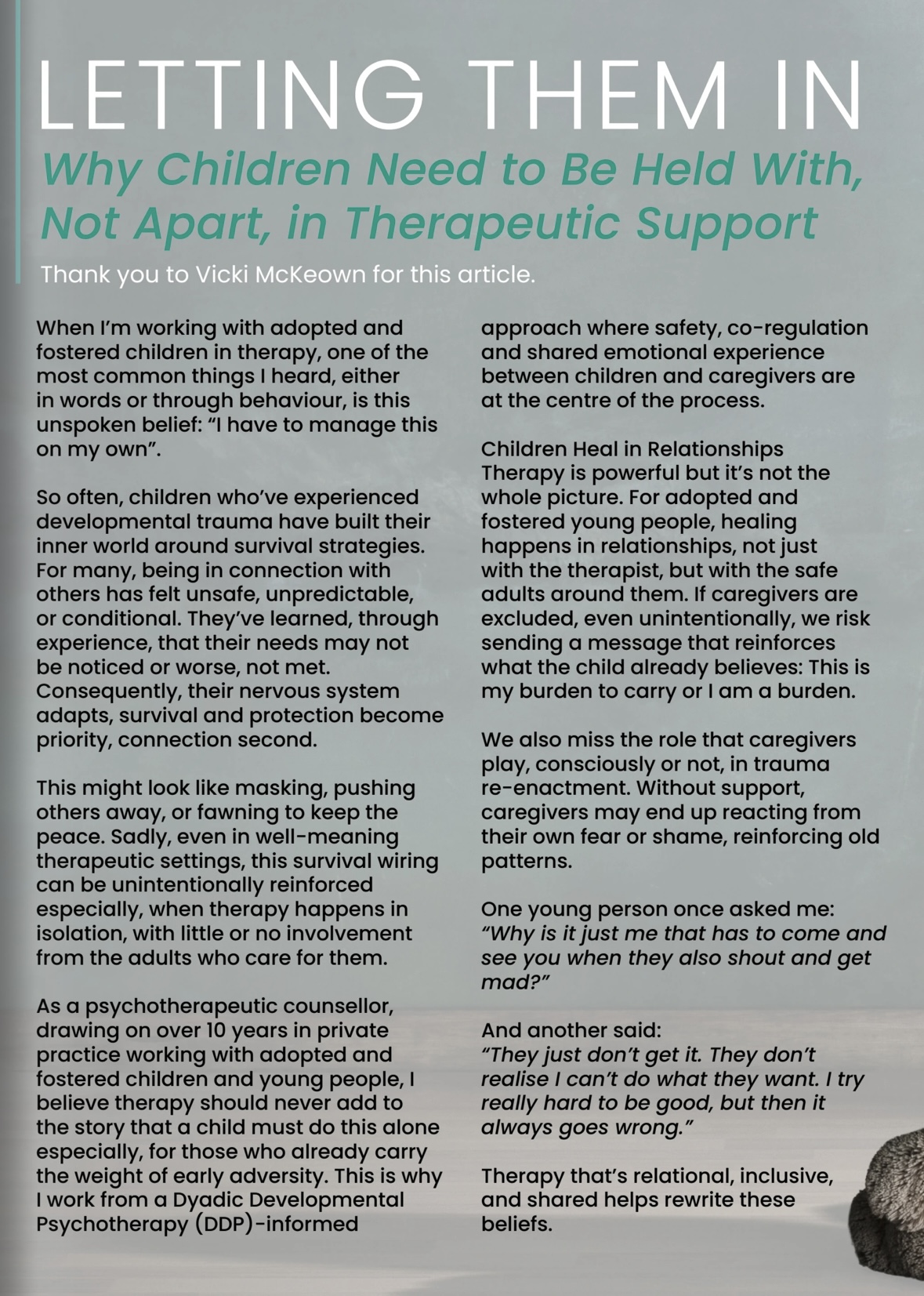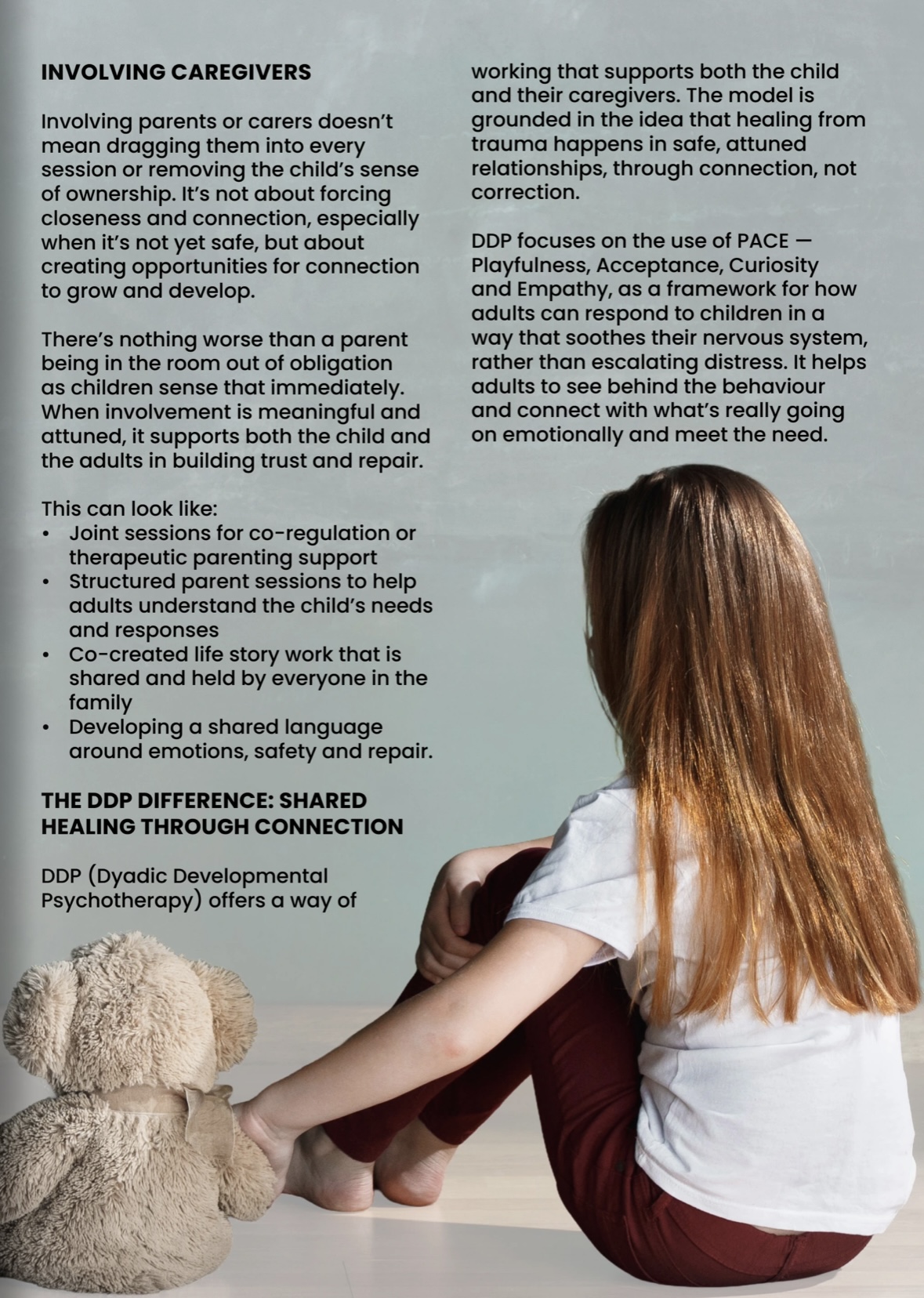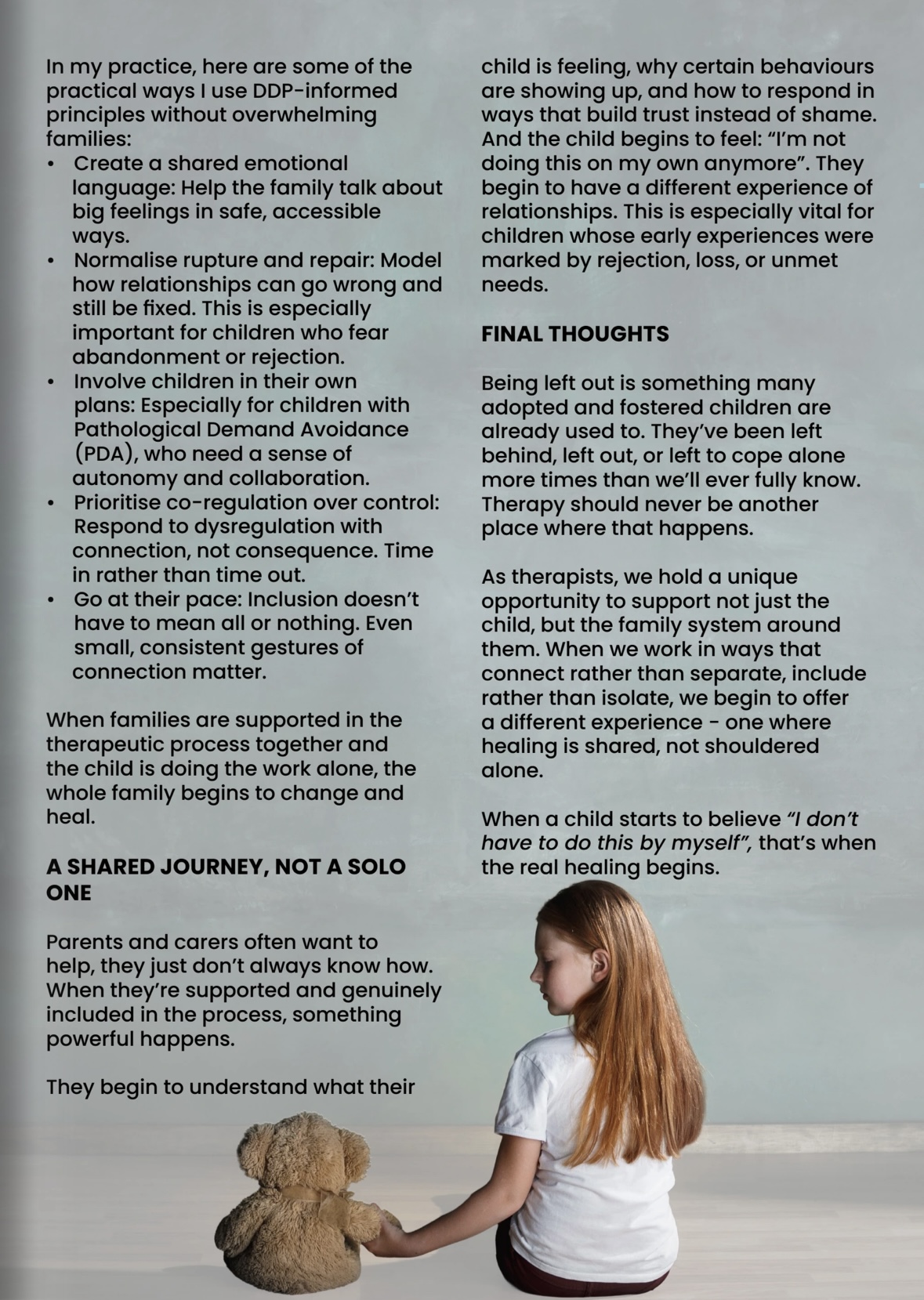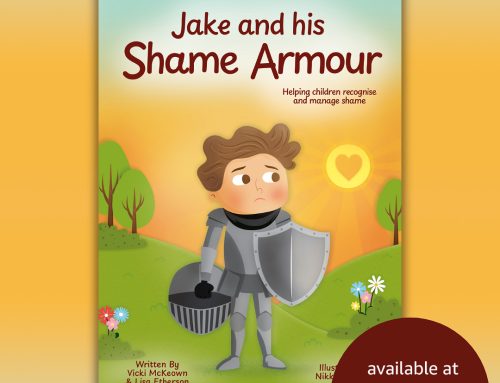
NCPS Counselling Matters Magazine – August 2025 – Letting Them In
I’m excited to share that I’ve had an article published in the NCPS Counselling Matters magazine. The article outlines the importance of parents being involved in the therapeutic process.
Letting Them In: Why Children Need to Be Held With, Not Apart, in Therapeutic Support
When I’m working with adopted and fostered children in therapy, one of the most common things I heard, either in words or through behaviour, is this unspoken belief: “I have to manage this on my own.”
So often, children who’ve experienced developmental trauma have built their inner world around survival strategies. For many, being in connection with others has felt unsafe, unpredictable, or conditional. They’ve learned, through experience, that their needs may not be noticed or worse, not met. Consequently, their nervous system adapts, survival and protection become priority, connection second.
This might look like masking, pushing others away, or fawning to keep the peace. Sadly, even in well-meaning therapeutic settings, this survival wiring can be unintentionally reinforced especially, when therapy happens in isolation, with little or no involvement from the adults who care for them.
As a psychotherapeutic counsellor, drawing on over 10 years in private practice working with adopted and fostered children and young people, I believe therapy should never add to the story that a child must do this alone especially, for those who already carry the weight of early adversity. This is why I work from a Dyadic Developmental Psychotherapy (DDP)-informed approach where safety, co-regulation, and shared emotional experience between children and caregivers are at the centre of the process.
Children Heal in Relationships
Therapy is powerful but it’s not the whole picture. For adopted and fostered young people, healing happens in relationships, not just with the therapist, but with the safe adults around them. If caregivers are excluded, even unintentionally, we risk sending a message that reinforces what the child already believes: This is my burden to carry or I am a burden.
We also miss the role that caregivers play, consciously or not, in trauma re-enactment. Without support, caregivers may end up reacting from their own fear or shame, reinforcing old patterns.
One young person once asked me:
“Why is it just me that has to come and see you when they also shout and get mad?”
And another said:
“They just don’t get it. They don’t realise I can’t do what they want. I try really hard to be good, but then it always goes wrong.”
Therapy that’s relational, inclusive, and shared helps rewrite these beliefs.
Involving Caregivers
Involving parents or carers doesn’t mean dragging them into every session or removing the child’s sense of ownership. It’s not about forcing closeness and connection, especially when it’s not yet safe, but about creating opportunities for connection to grow and develop.
There’s nothing worse than a parent being in the room out of obligation as children sense that immediately. When involvement is meaningful and attuned, it supports both the child and the adults in building trust and repair.
This can look like:
- Joint sessions for co-regulation or therapeutic parenting support
- Structured parent sessions to help adults understand the child’s needs and responses
- Co-created life story work that is shared and held by everyone in the family
- Developing a shared language around emotions, safety, and repair
The DDP Difference: Shared Healing Through Connection
DDP (Dyadic Developmental Psychotherapy) offers a way of working that supports both the child and their caregivers. The model is grounded in the idea that healing from trauma happens in safe, attuned relationships, through connection, not correction.
DDP focuses on the use of PACE — Playfulness, Acceptance, Curiosity, and Empathy, as a framework for how adults can respond to children in a way that soothes their nervous system, rather than escalating distress. It helps adults to see behind the behaviour and connect with what’s really going on emotionally and meet the need.
In my practice, here are some of the practical ways I use DDP-informed principles without overwhelming families:
- Create a shared emotional language: Help the family talk about big feelings in safe, accessible ways.
- Normalise rupture and repair: Model how relationships can go wrong and still be fixed. This is especially important for children who fear abandonment or rejection.
- Involve children in their own plans: Especially for children with PDA, who need a sense of autonomy and collaboration.
- Prioritise co-regulation over control: Respond to dysregulation with connection, not consequence. Time in rather than time out.
- Go at their pace: Inclusion doesn’t have to mean all or nothing. Even small, consistent gestures of connection matter.
When families are supported in the therapeutic process together and the child is doing the work alone, the whole family begins to change and heal.
A Shared Journey, Not a Solo One
Parents and carers often want to help, they just don’t always know how. When they’re supported and genuinely included in the process, something powerful happens.
They begin to understand what their child is feeling, why certain behaviours are showing up, and how to respond in ways that build trust instead of shame. And the child begins to feel: “I’m not doing this on my own anymore.” They begin to have a different experience of relationships. This is especially vital for children whose early experiences were marked by rejection, loss, or unmet needs.
Final Thoughts
Being left out is something many adopted and fostered children are already used to. They’ve been left behind, left out, or left to cope alone more times than we’ll ever fully know. Therapy should never be another place where that happens.
As therapists, we hold a unique opportunity to support not just the child, but the family system around them. When we work in ways that connect rather than separate, include rather than isolate, we begin to offer a different experience- one where healing is shared, not shouldered alone.
When a child starts to believe “I don’t have to do this by myself,”
That’s when the real healing begins.






